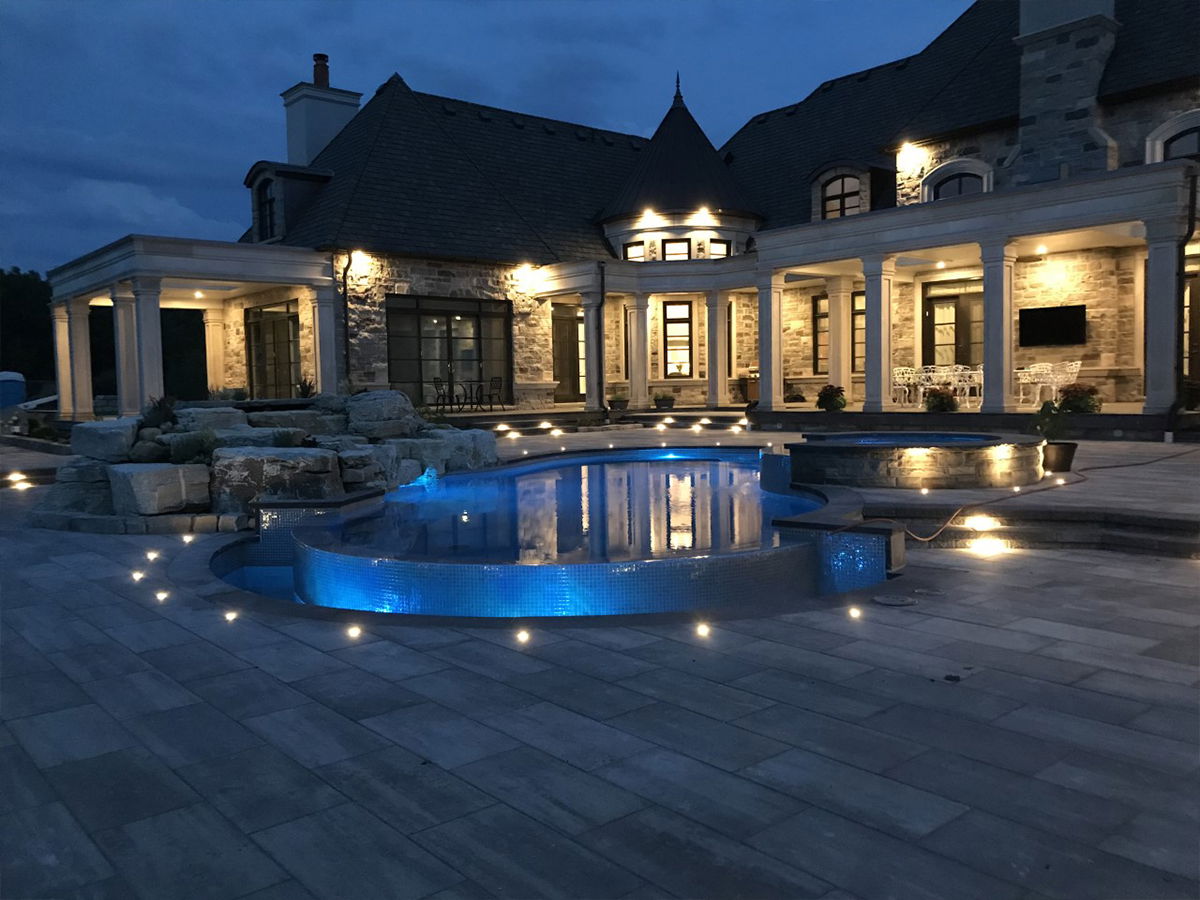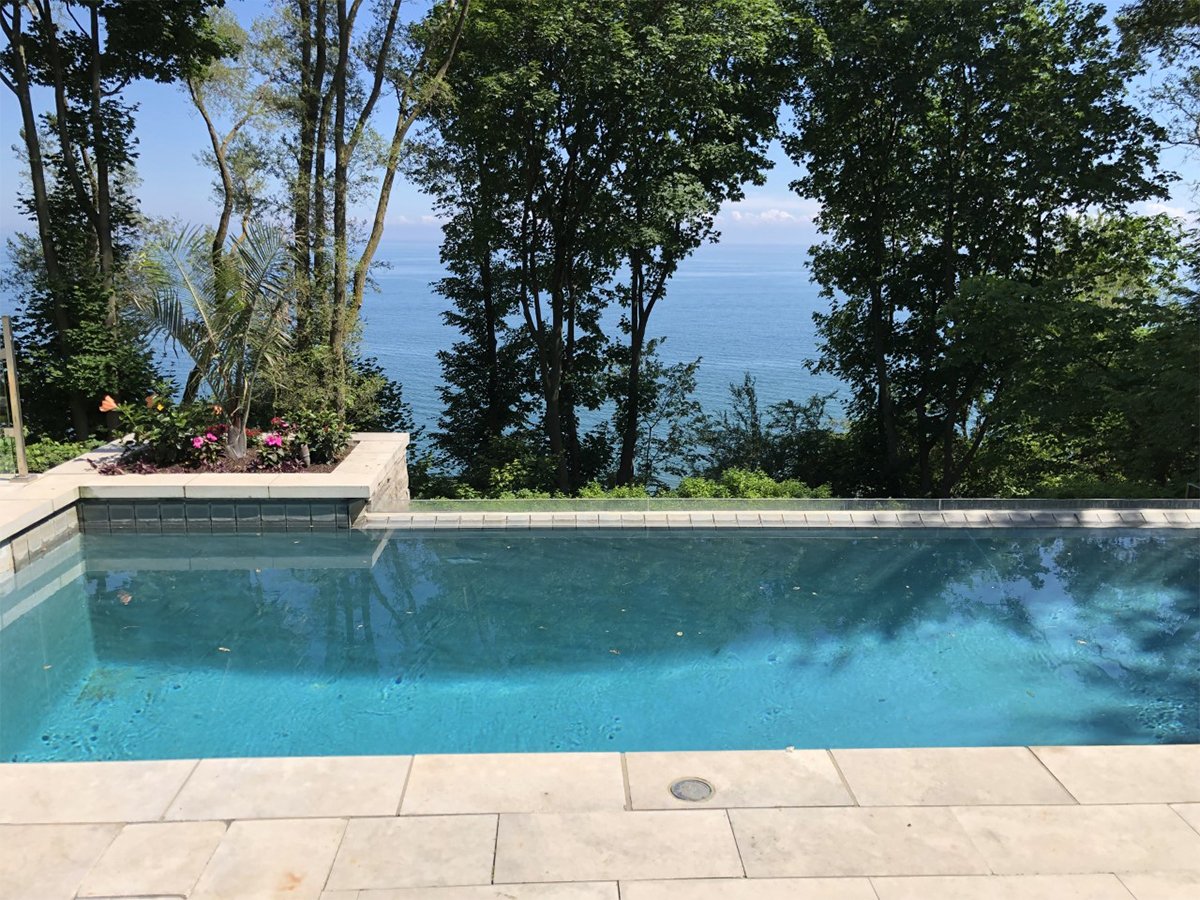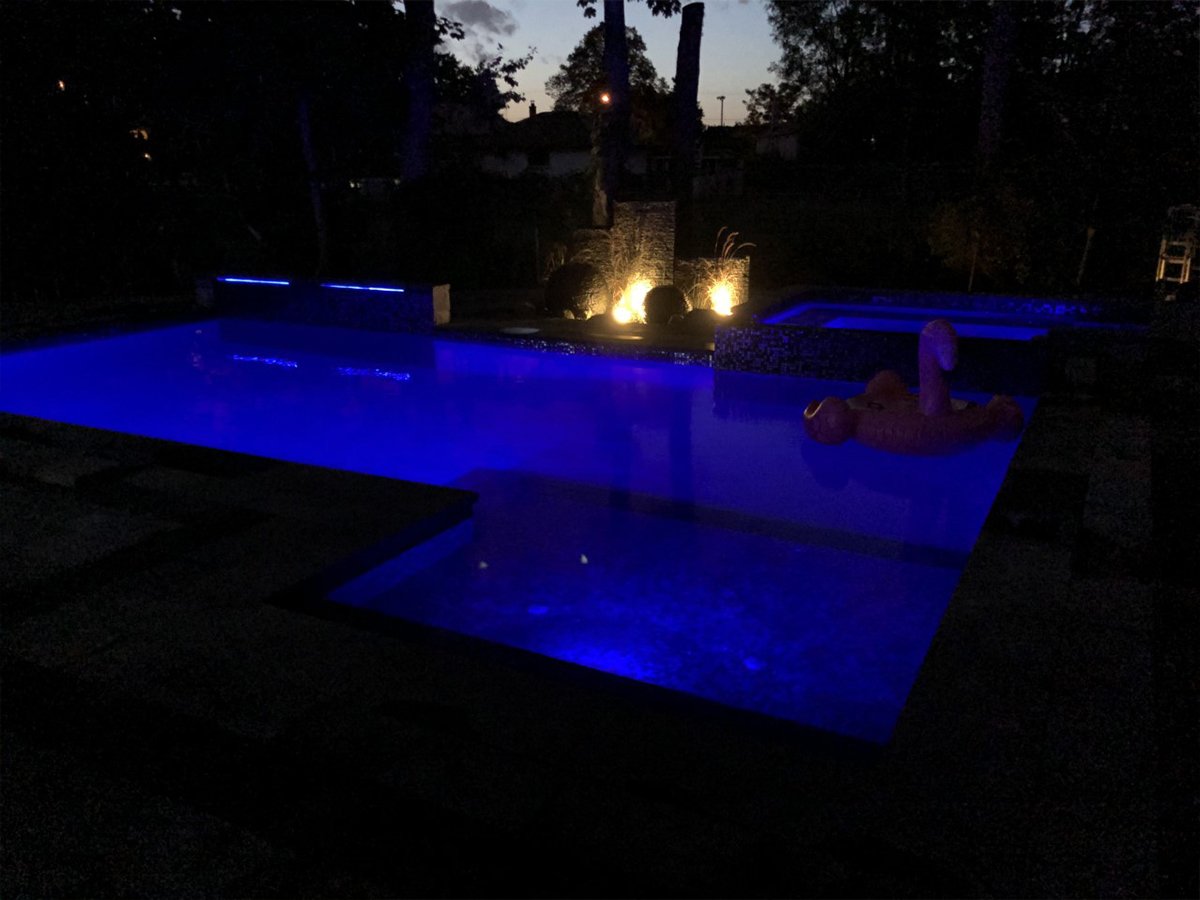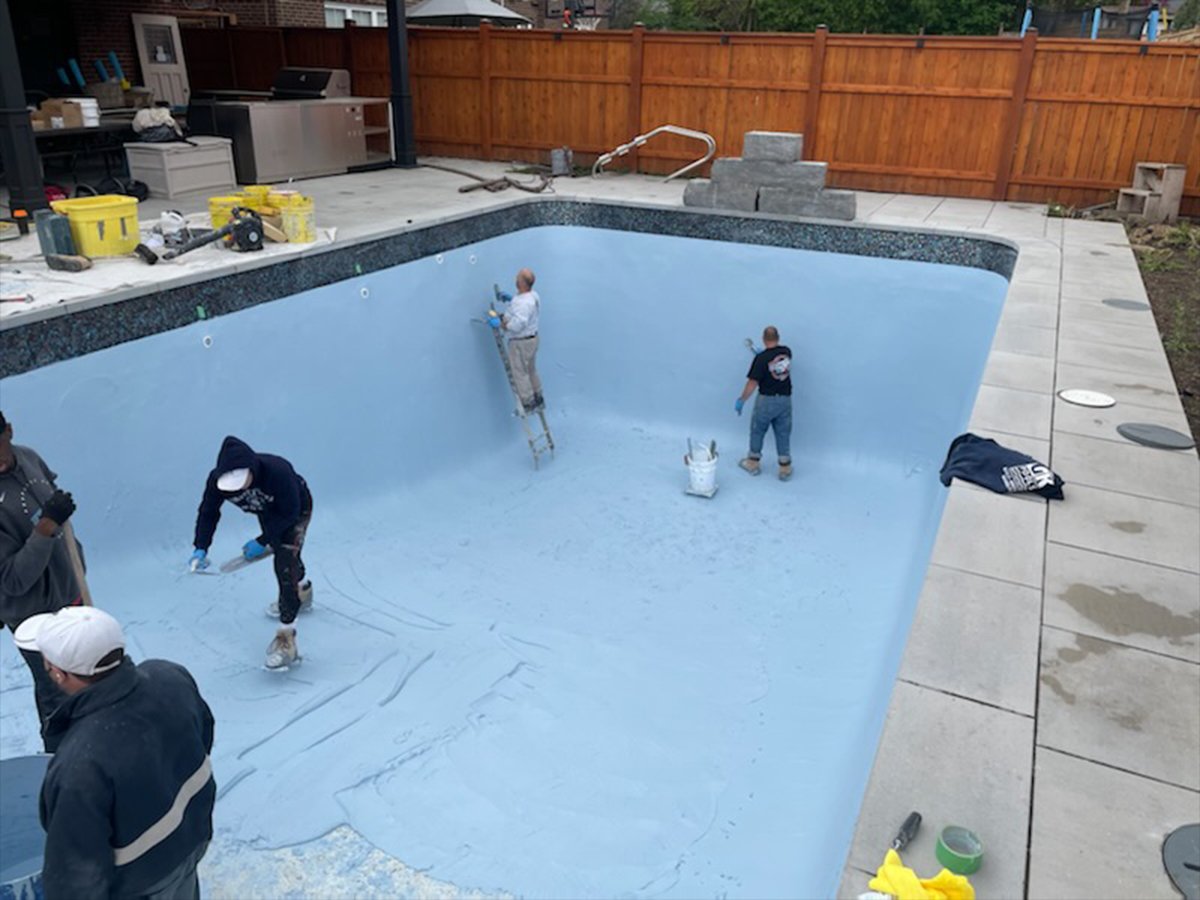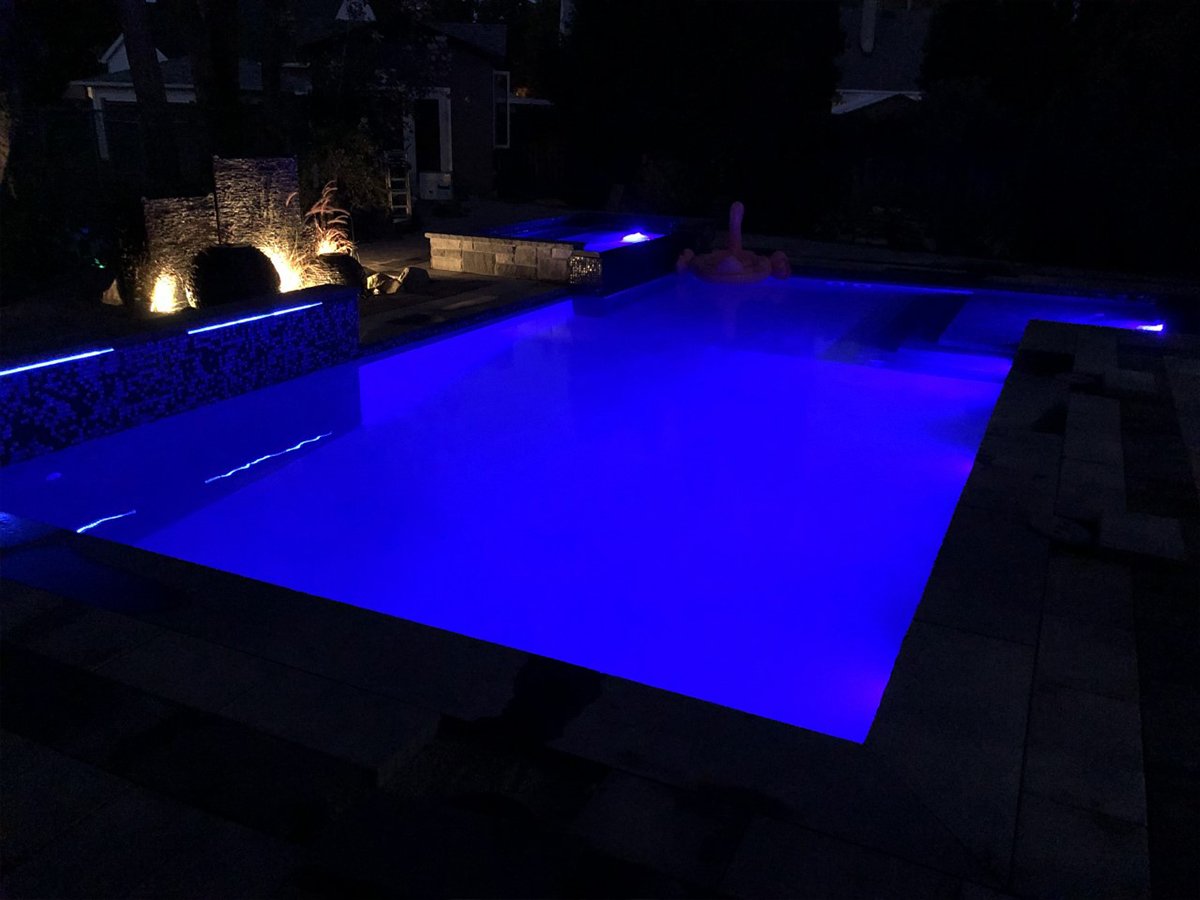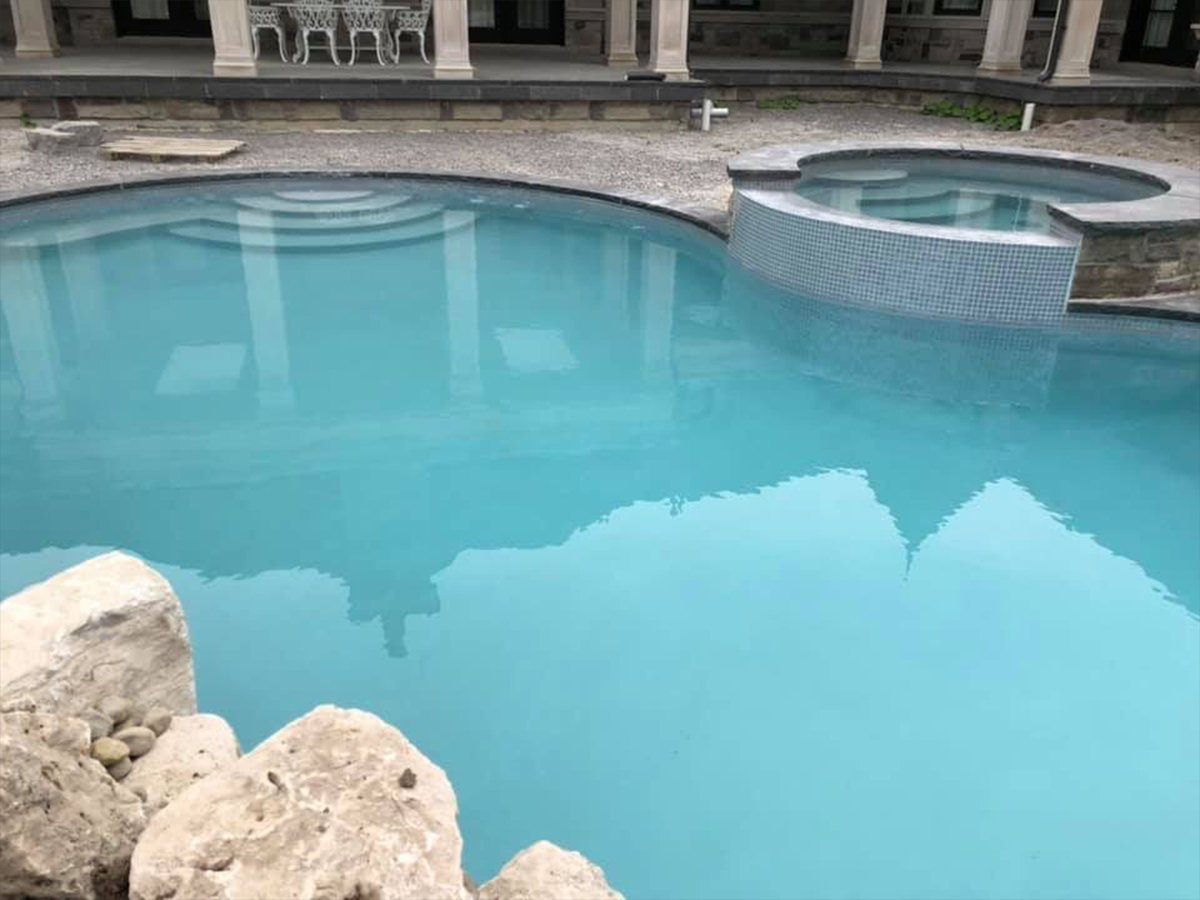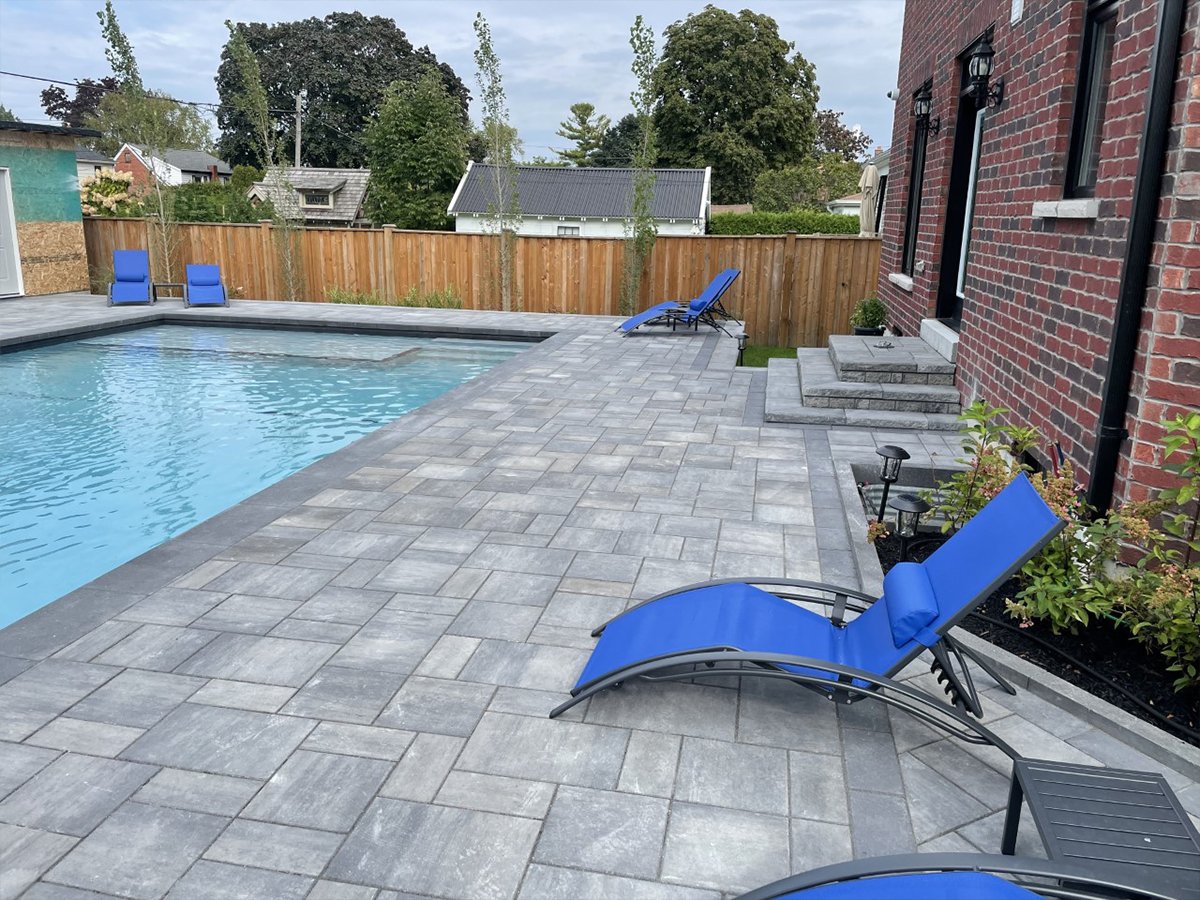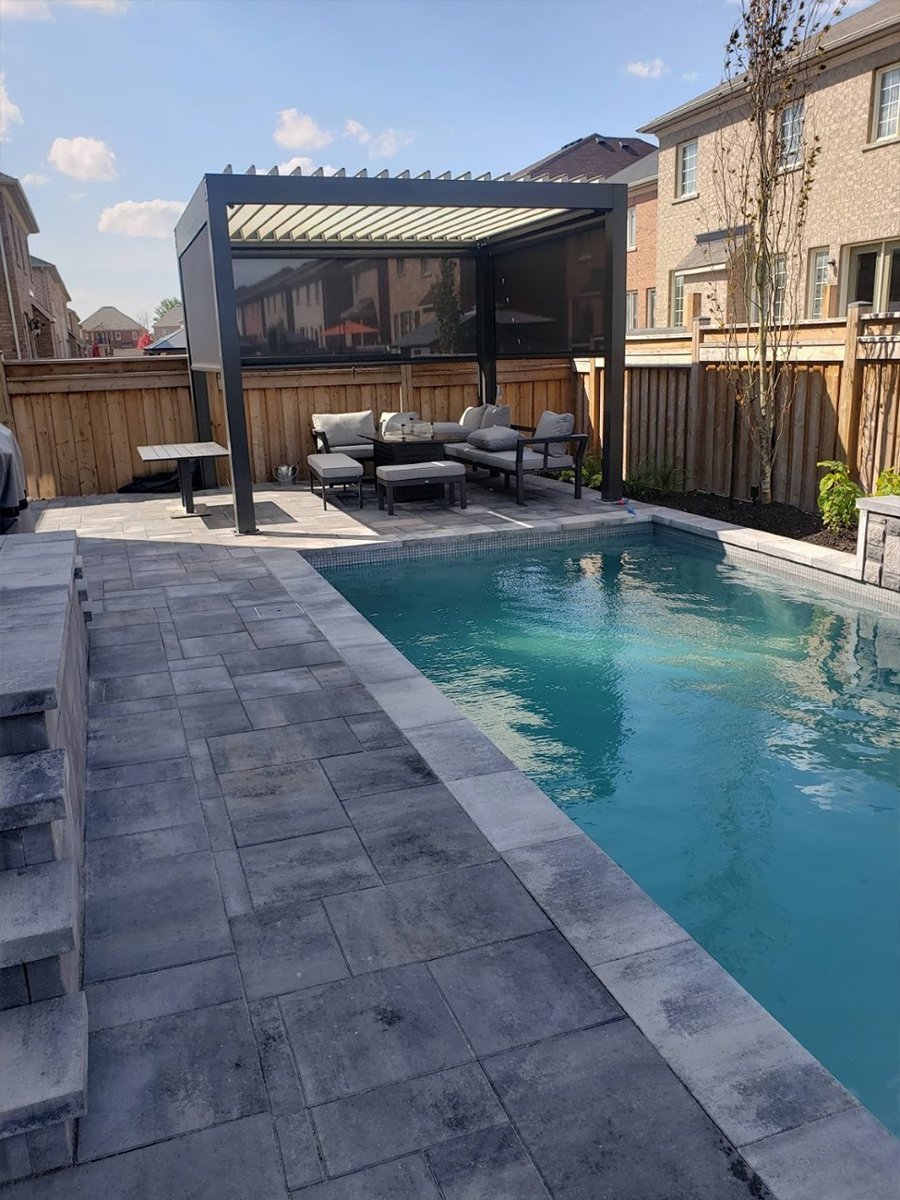Pickering Concrete Swimming Pools
Let G3 Pool and Spa design and install your Pickering concrete swimming pool, and then sit back and relax – you’ll be in the best of hands. We’re experts in Pickering concrete pools, and we’ll provide you with the exact type of backyard oasis you want. In addition to building your concrete swimming pool in Pickering ON, we can also build a stunning deck and even take care of all your landscaping needs. No other company that builds concrete pools in Pickering ON can touch G3 Pool & Spa when it comes to ensuring customer satisfaction.
What to Expect During the Installation of Your Pickering Concrete Swimming Pool
Installing a Pickering concrete swimming pool is a major undertaking, of course. It usually takes several weeks to build Pickering concrete pools – in some cases, it can take a couple of months. But the first time you take a dip in your concrete swimming pool in Pickering ON, you’ll realize the wait was worth it. Here’s some information on what to expect during the installation of concrete pools in Pickering ON.
- Excavation – This is the first step of the Pickering concrete swimming pool installation process. You’ll have a lot of excavation equipment in your backyard, because it takes a lot of machinery to remove the required amount of dirt.
- Construction – Pickering concrete pools have to be reinforced with steel rebar, which supports the concrete shell. Plumbing will also need to be installed for the main drains and skimmer, as well as the return lines. Electrical work will also be needed in order to install lights.
- Concrete installation – Next, it will be time for the floors and walls of your pool to take shape. The process we use is called “Shotcrete”. This is a mixture of sand, portland cement, water and pea gravel. We spray this mixture on at 120psi which gives the concrete superior strength. Skilled tradesmen finish the concrete by hand. The concrete takes 28 days to cure.
This just scratches the surface of the many steps that go into constructing a Pickering concrete swimming pool. To learn more, contact G3 – the leader in Pickering concrete pools – online or call 416-251-6549.
FAQs:
How much would it cost to build a concrete pool in Pickering?
Building a concrete pool can involve a substantial financial investment. The cost of building a concrete pool ranges significantly, depending on the size and complexity of the project. Most projects will range anywhere from $45,000 to $150,000 or more, depending on the level of customization desired. The investment includes such items as labor costs, local material costs, building permits, excavation services, engineering fees, and drainage services. The chosen style may also incur other necessary costs like installation fees for electricity hookup and water filtration systems, plus any additional finishing touches required for safety or aesthetic purposes.
How long do concrete pools last?
The longevity of a concrete pool depends on the quality of the materials used in its construction, as well as the level of care and maintenance it receives. G3 Pool and Spa uses premium grade cement and aggregate for the construction of each concrete pool and spa. The concrete used for our swimming pools is manufactured using high heat curing technology, which results in a stronger, longer lasting product. With regular cleaning and chemical treatments, a concrete pool can last up to 30 years or more. Additionally, if any repairs are needed, they should be done promptly to ensure that your pool remains structurally sound.
What is the key material used for concrete swimming pools?
The best type of concrete for in-ground pools is known as shotcrete. Shotcrete is actually the name of the method where concrete is projected at high velocity onto the vertical surfaces of a swimming pool form. Upon impact, the concrete is instantly solidified to provide a build quality like no other. And with less formwork required, it adds multiple efficiencies to your project—stackable benefits you can count on. No other method even comes close to allowing the same level of customization and connection that shotcrete has to offer. Plus, shotcrete delivers a more stable base layer, so your project stands the test of time.
What information about your property is the most important to know at the start?
Check the local zoning regulations. The by-laws and regulations of each suburban or rural location are constantly changing. Details such as how far the pool is allowed to be from the lot line and what the fence height is are very important as, in some locations, a 4-sided fence at a certain height is required. Also, be aware of easements on your property. You should review your lot survey to see if there are any easements used for utilities or municipal services that could prevent you from building. In this way, when the permit application is submitted, you will not be surprised by any details that could impact the design or timelines of the project.
How will a pool installation affect the value of my home?
The addition of a well-maintained and aesthetically pleasing in-ground pool can increase both the immediate and potential enjoyment of a property as well as its perceived aesthetic value, especially in areas where pools and spas are in high demand. In spite of the fact that the investment and upkeep costs will not affect the home’s resale value, the enjoyment factor will increase its value immediately. Pools can contribute to a home’s aesthetic appeal to a greater extent than their functional value.
What other features should I consider when installing a pool?
When installing a pool, there are several other features to consider. For example, you may want to install a pool cover or safety fence to protect children and pets from accidental drowning. You may also want to consider adding lighting fixtures or fire pots around the pool area for nighttime swimming or entertaining. Additionally, you may want to add a deck or patio around the pool for a more comfortable and inviting atmosphere. Finally, you may want to install an automatic pool cleaner to reduce the amount of time spent cleaning your pool.
How can I determine how much space my pool and spa should occupy on my property?
It’s tempting to think about entertaining possibilities in the future, but the 80% rule applies when selecting a size. You should build a spa for four or five people if your spa will most likely be used by two or three people. A larger volume of water would require more time and energy to heat up each time the spa is used. Patios, seating areas, and other spaces for relaxation and activity follow the same principles.
What factors should I consider in choosing a pool builder?
When choosing a pool builder for your residential concrete pool, it is important to consider their experience and reputation in the industry, as well as any customer reviews or testimonials. Established companies are more likely to be able to stand behind their products and services than new companies. Make sure to ask questions about the materials they use, their construction process, and any warranties or guarantees that may be offered. Plus, it is important to ensure that the company is licensed and insured, as this will protect you from any potential liabilities.
How long will it take to complete the pool installation?
Pool projects take varying amounts of time to complete, depending on their complexity and scale. A project can also be delayed by bad weather. The project manager will follow an established timeline, but most projects take between three and four weeks to complete. The landscaping and construction of a substantial backyard project can take two to three months. This accounts for permits, design work, excavation, plumbing and electrical work, construction, the final deck architecture, and details pertaining to landscaping.
How thick are in-ground concrete pool walls?
The required thickness of concrete for pool walls depends primarily upon the state of the soil. Soft, sandy soils will require thicker walls than hard, rocky soils in order to ensure the stability and integrity of your pool. To reinforce the structure of the pool, the walls are usually made at least 6 inches thick. They can be even broader, noting that the plaster finish of the inside should be a minimum of 1 cm thick. It is important to discuss this with your pool builder, as they will be able to provide recommendations based on the specific requirements of your project.
What is the best way to clean the concrete around your pool?
The best way to clean the concrete around your concrete swimming pool is by using a pressure washer. This will help to remove any dirt, grime, and debris that may have accumulated over time. Once you’ve finished pressure washing, it is important to use a brush and detergent to scrub away any stubborn stains or build-up. Finally, rinse off the area with clean water and allow it to dry completely before using the pool again. Consider also employing a professional pool company to provide this service on a scheduled basis.
What if the concrete pool needs to be resurfaced?
Resurfacing a concrete pool typically involves cleaning and preparing the surface, repairing any cracks or damage, and then applying a new layer of concrete. Depending on the condition of your pool, additional steps such as acid washing or patching may also be necessary. If your concrete pool needs to be resurfaced, it is important to contact a professional pool builder who has experience in this type of work. They will be able to assess the condition of the pool and recommend the best course of action, which may include patching, acid washing, or applying a new layer of concrete. The cost of resurfacing will depend on the size of the pool and the extent of the work that needs to be done.
Are vinyl pools cheaper than concrete pools?
Vinyl pools are typically cheaper than concrete pools because they require less labor and materials to install. Vinyl pools are pre-manufactured, meaning they can be installed quickly and easily with minimal disruption. The main disadvantage of installing a vinyl pool is that it is not as durable or long-lasting as a concrete pool. Vinyl pools are also more prone to punctures and tears, and they require regular maintenance to keep them in good condition. Additionally, vinyl pools do not offer the same level of customization as a concrete pool, so if you’re looking for something unique, concrete may be the better option.
How long can I leave my concrete pool empty?
The answer to this depends on several factors, such as the size of your pool and the weather conditions in your area. Generally speaking, you should only leave a concrete pool empty for no more than six months at a time. If you plan to keep it empty for longer than that, you should consider taking additional precautions like applying waterproof sealant or adding barriers to help protect the walls of your pool. The types of damage that could occur include drywall cracking, disintegration of concrete, rusty nails, and various other issues that may require costly repairs down the road.

